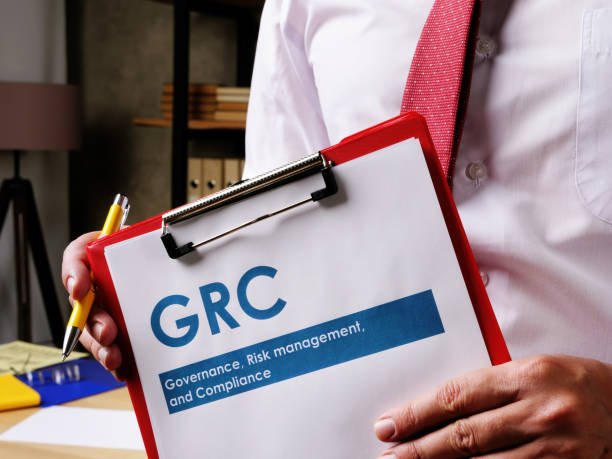
GRC Framework
Key Takeaways:
● It is understanding the critical components of a practical GRC framework.
● We are implementing best practices for mitigating risks and ensuring compliance.
● We are leveraging technology to streamline GRC processes within organizations.
● Insights into real-world applications and benefits of robust GRC systems.
The Importance of a Strong GRC Framework
A strong Governance, Risk, and Compliance (GRC) framework is essential in today’s quickly changing business landscape. It guarantees businesses can effectively recognize, evaluate, and reduce risks while adhering to legal obligations. Companies with robust GRC frameworks will likely avoid costly penalties and reputational damage. One popular approach for managing these aspects effectively is SAP GRC, a comprehensive solution designed to streamline governance, risk management, and organizational compliance processes.
The complexity of regulatory landscapes has been growing, making it more critical than ever for businesses to have efficient GRC systems in place. With a robust GRC framework, organizations can avoid significant financial losses, legal penalties, and damage to their reputation. Integrating GRC frameworks into business strategies helps in compliance and achieving long-term sustainability and operational excellence. Furthermore, a well-implemented GRC framework enables proactive risk management, allowing businesses to anticipate and address potential issues before they escalate. This forward-looking approach safeguards against compliance failures and strengthens overall business resilience. As regulations evolve, investing in a dynamic GRC solution like SAP GRC ensures that organizations remain agile and capable of adapting to new challenges efficiently.
Essential Components of an Effective GRC Framework
A comprehensive GRC framework consists of several key components:
● Governance involves establishing clear policies, procedures, and responsibilities to ensure accountability within the organization. It also lays the foundation for a structured approach to decision-making and oversight.
● Risk Management The executives implies recognizing likely dangers, evaluating their effect, and carrying out relief systems. This part includes persistent observing and answering to proactively address gambles.
● Compliance: Ensuring adherence to relevant laws, regulations, and internal policies. Effective compliance management involves staying updated with regulatory changes and embedding compliance requirements into daily operations.
Each of these components plays a pivotal role in the overall GRC strategy. Governance ensures a transparent chain of command and accountability, risk management helps identify potential threats before they become costly problems, and compliance ensures that the organization adheres to laws and regulations, thereby avoiding legal penalties and maintaining its reputation.
Best Practices for Implementing GRC
Implementing a successful GRC framework requires adherence to best practices:
● Cross-functional collaboration: involving departmental stakeholders to guarantee a comprehensive approach to risk and compliance. This collaborative effort helps address diverse risks that can impact various parts of the organization and creates a more resilient GRC strategy.
● Continuous Improvement: Regularly evaluate and update GRC procedures to adjust to evolving legal requirements and business environments. Continuous Improvement involves periodic assessments and leveraging feedback to enhance the effectiveness of the GRC framework.
● Training and Education: supplying workers with continual training to promote a risk awareness and compliance culture. This ensures that every organization member understands their role in GRC and is equipped to handle compliance-related issues effectively.
Implementing these best practices helps create a dynamic and resilient GRC framework. Continuous Improvement ensures that the GRC processes are up-to-date and effective, while training and Education foster an organizational culture that prioritizes compliance and risk management.
Technology Solutions for Enhancing GRC
Technology plays a vital role in streamlining GRC processes. Automated tools and software solutions help organizations manage risks more effectively and maintain compliance. For example, companies can automate risk assessments and monitoring using risk management software, making the GRC process more efficient. GRC software solutions can also integrate with existing systems, providing real-time data and insights for better decision-making.
Solutions such as SAP GRC offer a centralized platform that allows organizations to manage their governance, risk, and compliance processes more efficiently. These tools can reduce human error, automate repetitive tasks, and consistently meet compliance standards. Moreover, they offer advanced analytics and reporting capabilities that provide actionable insights and facilitate better strategic decisions. Additionally, SAP GRC’s integration with other enterprise systems ensures that all relevant data is consolidated, providing a comprehensive view of risk and compliance across the organization. This holistic approach enhances the ability to identify and address potential issues before they escalate proactively. By leveraging advanced technology for GRC, organizations can achieve greater transparency, mitigate risks more effectively, and ensure ongoing regulatory compliance with minimal manual effort.
Future Trends in GRC
New regulatory environments and developing technologies will undoubtedly influence GRC in the future. Modern technologies like artificial intelligence and machine learning are essential for organizations to adopt if they want to stay ahead of the curve and enhance their GRC capabilities. Furthermore, GRC frameworks will emphasize cybersecurity more to combat the growing threat of cyberattacks. Businesses that follow these trends will be better positioned to manage risks and ensure compliance in a complex and dynamic environment.
Advanced technology integration into GRC frameworks will become essential as regulations tighten and risks become more complex. Predictive analytics can benefit from using AI and machine learning to identify possible risks before they materialize into problems. Similarly, enhanced cybersecurity measures within GRC frameworks will safeguard against breaches, ensure data integrity, and comply with privacy regulations. Additionally, real-time data analysis will enable organizations to respond more swiftly to emerging threats and regulatory changes. By leveraging advanced technologies, companies can enhance risk management strategies, ensuring more robust protection against evolving threats. As the regulatory landscape evolves, investing in these technologies will be crucial for maintaining a competitive edge and providing long-term resilience.


